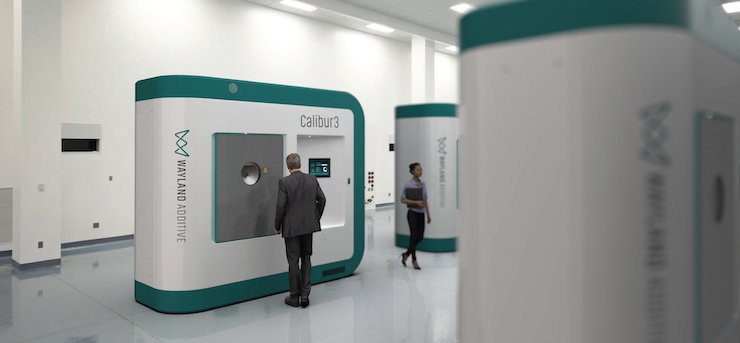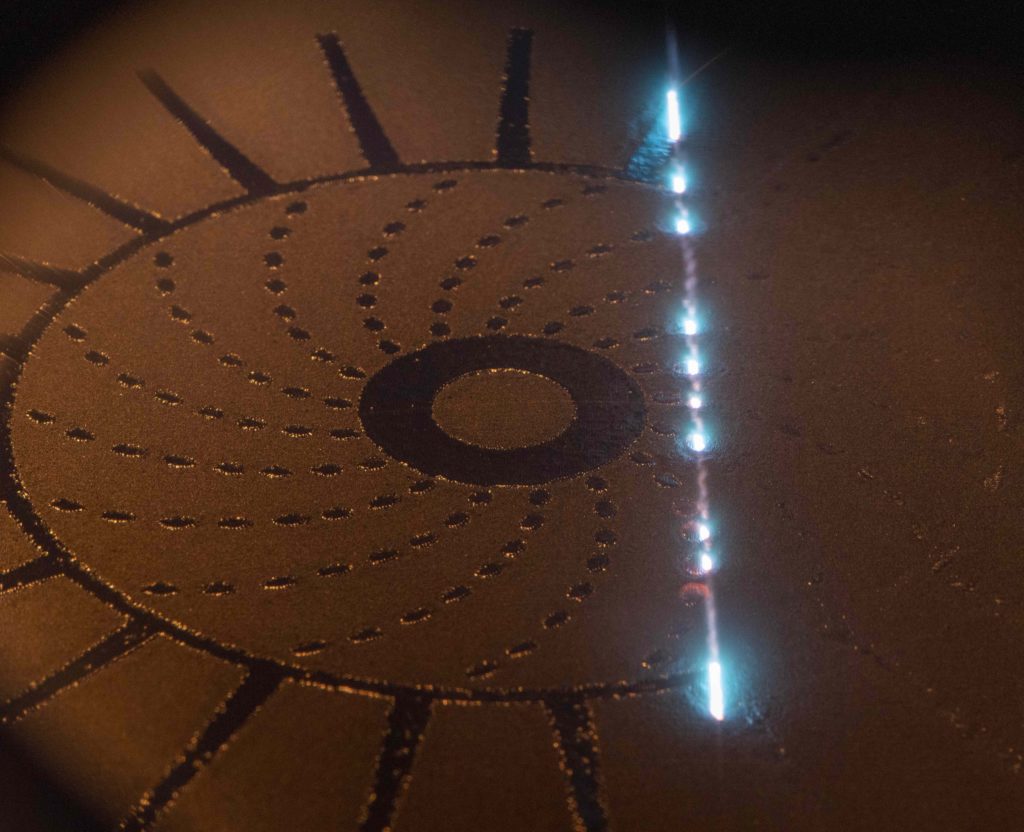Wayland Additive, an original equipment manufacturer (OEM) of metal additive manufacturing (AM) platforms, has announced that, thus far in 2022, the company has successfully been scaling up production as planned. This includes Wayland’s first delivery last month of its flagship Calibur3 machine, which it sold at the beginning of last year to the Canadian energy engineering consultancy, Exergy Solutions.
The Calibur3 depends on Wayland’s proprietary NeuBeam technology, a form of electron-beam melting (EBM) AM. The main benefit of Wayland’s EBM over competitors is that the former heats only the powder being printed, rather than the entire powder bed. This prevents the manufacturing process from resulting in a “sinter cake” along with the printed part, itself, thereby greatly simplifying the post-processing phase.
Wayland has grown in terms of both manpower and operating space this year, increasing its personnel to match its growing headquarters. The latter includes a new production facility, as well as land secured for a planned R+D center.

In a press release regarding the company’s progress in 2022 and optimism for 2023, Wayland Additive’s CEO, Will Richardson, commented, “The new production facilities were commissioned to meet the orders for Calibur3 that the business has secured. The greatly expanded space supports a production line and will ensure that all orders are met.” Peter Hansford, business development director at Wayland, explained, “Calibur3 operates at temperature ranges that many in this industry are not used to. This means that we can process a much wider range of metal materials — including high carbon steels — with much faster development times which is a huge bonus for our clients.”

The point about NeuBeam technology’s facilitating much faster development times for metal materials is one of the selling points that Wayland touts most often. According to the company, NeuBeam’s speed advantages allow the Calibur3 to qualify metal materials in as little as six months — four times faster than the typical two years it takes with SLS applications.
In a recent profile of the company done by TCTMagazine, Wayland asserted its plans to build six more Calibur3 machines over the rest of the year, in addition to the three the company has already built, and another one that the company plans to install at engineering consultancy EWI’s Buffalo Manufacturing Works facility. EWI and Wayland are partnered in an effort to identify government and commercial projects in the US that could use the Calbur3.
Next year, Wayland plans to make 12 Calibur3 platforms, and, all told, claims to have order backlogs totaling about £50 million (currently around $57 million). The company considers medical, oil & gas, power generation, and the military to all be solid potential customer bases, which is generally in-line with metal AM applications across the board.
As the metal AM market continues to scale up, it will be interesting to see how things unfold in the UK. In particular, as I’ve mentioned previously, I think it’s worth keeping track of trade relationships that could emerge centered around connections between the metal AM markets in the UK and the northeastern US. Given the fallout from Brexit, combined with the European continent’s increasingly tenuous situation, it seems inevitable that the UK will only continue to become increasingly dependent on the US as a trade partner. Aside from this, the military/intelligence relationship between the two nations — partnerships in leading both NATO and the Five Eyes — only adds to the logic of the idea of the two nations’ respective AM sectors forging close bonds.
Images courtesy of Wayland Additive
Subscribe to Our Email Newsletter
Stay up-to-date on all the latest news from the 3D printing industry and receive information and offers from third party vendors.
You May Also Like
Precision at the Microscale: UK Researchers Advance Medical Devices with BMF’s 3D Printing Tech
University of Nottingham researchers are using Boston Micro Fabrication‘s (BMF) 3D printing technology to develop medical devices that improve compatibility with human tissue. Funded by a UK grant, this project...
3D Printing Webinar and Event Roundup: April 21, 2024
It’s another busy week of webinars and events, starting with Hannover Messe in Germany and continuing with Metalcasting Congress, Chinaplas, TechBlick’s Innovation Festival, and more. Stratasys continues its advanced training...
3D Printing Webinar and Event Roundup: March 17, 2024
It’s another busy week of webinars and events, including SALMED 2024 and AM Forum in Berlin. Stratasys continues its in-person training and is offering two webinars, ASTM is holding a...
3D Printed Micro Antenna is 15% Smaller and 6X Lighter
Horizon Microtechnologies has achieved success in creating a high-frequency D-Band horn antenna through micro 3D printing. However, this achievement did not rely solely on 3D printing; it involved a combination...





























